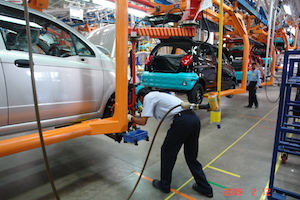 While we wait for the effects of Brexit to be fully felt in our industry, our July-August issue focuses on events a little further away. Many foreign car and truck plants in India have suffered from underutilised capacity, but more recently a change in government has created a mood of optimism which is being felt by consumers and carmakers alike.
While we wait for the effects of Brexit to be fully felt in our industry, our July-August issue focuses on events a little further away. Many foreign car and truck plants in India have suffered from underutilised capacity, but more recently a change in government has created a mood of optimism which is being felt by consumers and carmakers alike.
My recent visit to the country certainly bore this out, with all the OEMs I met confirming that they are increasing output to meet demand. Most have ambitious plans to grow their share of the Indian market, and to achieve this they are introducing new model line-ups which are more tailored to the tastes and pockets of Indian consumers. This requires vehicles that have been designed and developed in India rather than global models transplanted from other regions.
All are targeting highly competitive segments in which strong, well-established domestic brands have, up to this point, had a tight grip on market share. However, there are signs that new models can make an impact, as seen with Renault’s new Kwid. Nissan, Toyota and General Motors are also introducing new models and Daimler is already producing its 3143 CM truck (designed and developed in India). But introducing new models and ramping up production volumes isn’t easy, and one of India’s biggest assets also creates one of its biggest challenges.
It is widely accepted that the relatively low cost of labour makes building cars in India very cost-effective, but a low level of automation throughout the plants has placed a huge amount of responsibility for the quality of the build onto the shoulders of the individuals assembling the vehicles. Automation is not a ‘silver bullet’ for producing high volumes but it does offer the key elements of repeatability and consistency. All of my visits highlighted various programmes to develop greater confidence and engagement within the plants' workforces and I have to say that, living in the world of Industry 4.0, it was refreshing to see initiatives that were almost entirely focused on people.
We are all used to hearing about another state-of-the-art plant being built somewhere in the world and imagining a seamless continuation of production, all nicely homogenised, but this is not always the case. The great thing I find with these trips is being able to get up close to the manufacturing operations and speak to those responsible for making these huge production lines work – smoothly, efficiently and cost-effectively, without error or failure. This is no simple task.
































